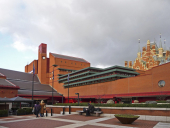
London boroughs are urging ministers to make estate regeneration a central pillar of the capital’s response to its deepening housing crisis, warning that
without stronger financial support thousands of potential homes will remain stuck on the drawing board.
A new report, A Decade of Renewal: the Contribution of London Estate Regeneration, published by London Councils and the London Housing Directors’ Group, argues that reinvesting in existing estates could deliver a major uplift in social housing while modernising ageing homes.
The study identifies nine case-study estates where up to 10,000 council homes could be created or upgraded through a mix of new builds, additional units and replacement properties. Boroughs say wider benefits include improved energy efficiency, better health outcomes, enhanced play and community spaces, and new employment and training opportunities for local residents.
With London grappling with soaring homelessness, sluggish housing delivery and mounting concerns over social housing standards, borough leaders stress that estate regeneration—whether through refurbishment or full-scale redevelopment—must form a “core” part of the solution.
But they warn that progress is being choked by a lack of investment. London Councils’ analysis shows boroughs are facing a real-terms cut of £269m in housing repairs and investment over the next four years, as budgets continue to be squeezed.
Ahead of the government’s upcoming Budget, the cross-party body is calling for urgent measures to stabilise the sector. Its proposals include increasing the social rent convergence rate by at least £3 a week—an approach it says would generate an extra £588m for council housing in London over five years, compared with the current formula of CPI plus 1%.
Boroughs are also pushing for national or regional programmes dedicated to estate regeneration, supported by flexible, long-term funding. They argue that current restrictions within the Social and Affordable Homes Programme limit their ability to replace old homes or redevelop estates in ways that meet modern standards.
A more strategic, joined-up funding framework, they say, would unblock stalled schemes and help align housing investment with the government’s wider aims on economic growth, public health and net-zero commitments.Cllr Grace Williams, London Councils’ Executive Member for Housing & Regeneration, said:
“Building new council housing and improving the quality of existing homes are top priorities for London boroughs.
“As this report shows, regenerating council estates in the capital offers exciting opportunities to deliver new social housing fit for the 21st century. London is grappling with enormous housing challenges, and estate regeneration should be a core part of our approach to tackling the crisis.
“However, the continuing squeeze on our resources holds us back. We urgently need more funding firepower if we are to unlock stalled sites and ramp up regeneration. The coming Budget and government decision on social rent convergence will be pivotal for making this happen.”
Joanne Drew, Co-Chair of the London Housing Directors’ Group, said:
“From these examples of estate regeneration across the capital we can clearly see boroughs’ determination to deliver modern, high-quality council housing for Londoners.
“Regeneration can help London meet its housing targets, while also improving the quality, safety, and sustainability of our estates.
“But we are also encountering significant barriers, not least the immense pressures on our council housing budgets. To realise the full potential of estate regeneration in London, we need the right tools, financial footing, and policy direction. Boroughs are keen to work in partnership with the government to achieve this.”
Read the full report here: A Decade of Renewal: the Contribution of London Estate Regeneration


































